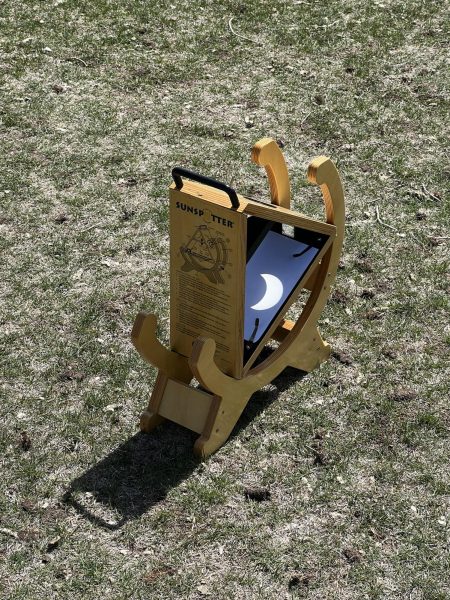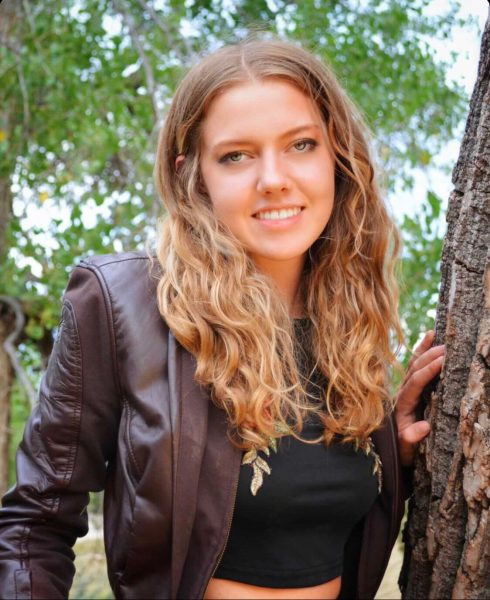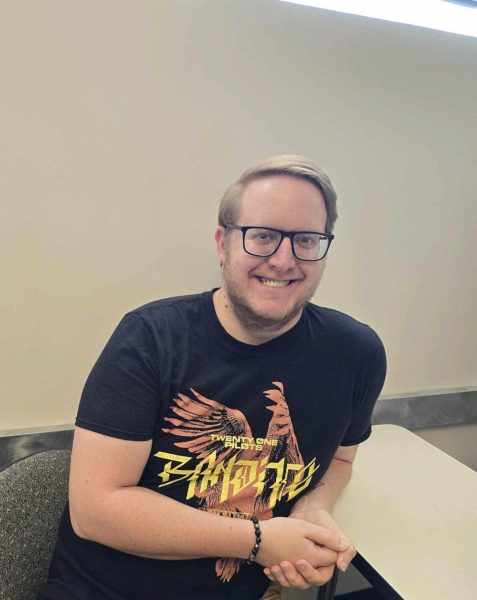Birds fell silent and the air cooled as if nature was holding its breath to witness the spectacle. A crowd of about 200 people awaited the captivating exchange between the celestial spheres, momentarily stirring a latent awareness of the bodies that govern the universe.
Sporting protective glasses, waiting in line to use telescopes and looking through sun spotters, students, staff and community members filled Arapahoe Community College’s west lawn for the eclipse watch party on April 8. While the glowing orange crescent is a wonder to see through the darkened safety glasses, gazing through an 11-inch Celestron telescope makes for a more formidable display, as the perceptible black specks are actually sunspots the size of Jupiter.
Everett Bithell, a concurrent enrollment student at ACC, hopped on the opportunity to attend the viewing and utilize the equipment provided at the event.
“It’s great to see so many people come out here and really feel like a student body, and also [use] really cool telescopes,” Bithell said. “I love space, it is the most beautiful and existentially terrifying thing in existence, kind of existence.”

Students were not the only attendees at the event; many Littleton residents brought chairs to the lawn and settled in for viewing. One resident said they had attended a previous viewing party here at ACC and used the school’s website to find the information for the event. Jennifer Jones, astronomy faculty member and physical science department chair, hosts many viewing parties for solar events.
“We’ve got our sun spotters, which are sophisticated pinhole cameras,” Jones said. “So they’re basically if you stick a pin in a piece of paper you can see the crescent, that’s the same, but it’s got lenses and mirrors to enlarge the image.”

ACC also had expensive, high-tech equipment on hand.
“We had two telescopes set up, but one of them is a piece of new technology, and we’re still learning about it,” Jones said. “The new piece of technology can talk to a device, and so the hope is if anyone has mobility concerns where it’s hard for them to look into an eye-piece, we can hand them an iPad and be like, ‘Here is what it can see.’”

Some people had seen an eclipse in the past, like the one in 2017. Others were brand new to the experience and took advantage of being on a college campus.
“I don’t know if I remember any solar viewing events during school growing up in France,” said Perrine Olie, an ACC international student, “This is my first time looking through a telescope in the U.S.”
Other students weren’t on campus to access the resources. Chyler Gaytan, a first-year psychology major at ACC, viewed the eclipse on her own.
“I thought that it was really beautiful. I felt lucky to be able to see it,” Gaytan said. “I was anxious for whatever reason, and I wish I did more research to understand the science behind it.”
The path of the eclipse’s totality started in Maine and swung down through the Midwest and into Texas before making its way to Mazatlan, Mexico. In Littleton, despite seeing only a partial eclipse NASA estimated at 65.5%, people still delighted in observing the astronomical phenomena. Bithell has even developed a unique tradition to enrich the occasion.
“I pull up ‘The Rise and Fall of Ziggy Stardust and the Spiders from Mars,’ by David Bowie,” Bithell said. “It’s incredible music, and it works so well looking up at the sky. For me, it enhances the experience.”












